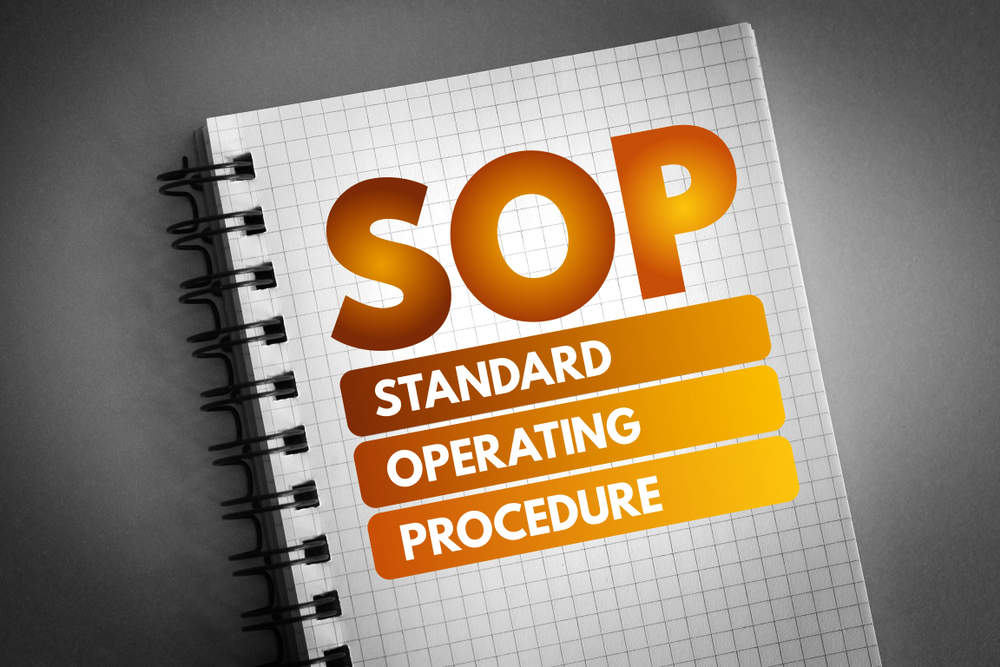SOP Development Essentials: How Standard Procedures Drive Consistency
Introduction
Standard Operating Procedures (SOPs) are critical to the success of any organization, providing a structured approach to executing tasks and ensuring consistency, efficiency, and compliance across all business operations. Whether in manufacturing, healthcare, customer service, finance, or technology, SOPs minimize errors, enhance productivity, and streamline workflows.
A well-documented SOP provides employees with clear guidelines, improves training efficiency, and reduces dependency on key personnel. Organizations that lack properly defined SOPs often face operational inefficiencies, inconsistency in output, and increased risk of compliance violations. This guide explores the fundamental aspects of SOP development, the benefits they offer, best practices for implementation, and how they contribute to long-term organizational success.
The Importance of SOPs
Ensuring Consistency and Quality
One of the most significant benefits of SOPs is maintaining a consistent level of quality in products and services. When procedures are clearly documented and followed correctly, the likelihood of errors decreases, and output remains uniform regardless of who performs the task.
For example, in the manufacturing industry, detailed SOPs ensure that products meet the same specifications every time they are produced. Similarly, in customer service, SOPs help maintain consistent interactions between employees and customers, enhancing customer satisfaction and brand reputation.
Enhancing Efficiency and Productivity
SOPs eliminate confusion and guesswork by providing clear instructions on how to perform tasks efficiently. Employees spend less time troubleshooting issues or seeking clarification from supervisors. This allows them to focus on completing their work effectively, leading to increased productivity across the organization.
In addition, SOPs help reduce downtime caused by operational inefficiencies. By having well-documented procedures in place, employees can quickly refer to instructions, troubleshoot common issues, and maintain workflow continuity without unnecessary disruptions.
Compliance and Risk Management
Many industries operate under strict regulatory guidelines. SOPs help ensure that businesses comply with legal and industry standards by providing step-by-step instructions to meet compliance requirements. This is particularly important in heavily regulated industries such as healthcare, finance, and manufacturing, where failing to follow procedures can result in legal consequences, financial penalties, or even safety hazards.
By adhering to SOPs, organizations mitigate risks associated with non-compliance, ensuring operational security and regulatory adherence. Regular updates and audits of SOPs help keep them aligned with current laws and industry best practices.
Facilitating Training and Onboarding
A well-crafted SOP serves as an essential training tool for new employees. Instead of relying on verbal instructions or trial and error, new hires can refer to documented procedures to quickly understand their roles and responsibilities.
Furthermore, standardized training materials based on SOPs ensure that all employees receive the same level of instruction, preventing inconsistencies in performance. This speeds up the onboarding process and reduces the time and effort needed for supervisors to train new staff.
Key Components of an Effective SOP
A well-developed SOP should be clear, concise, and easy to follow. The essential components of an SOP include:
- Title and Purpose
- The SOP should have a clear and descriptive title.
- A brief statement explaining the purpose and objective of the procedure.
- Scope and Applicability
- Defines where and when the SOP applies.
- Specifies the roles and departments that should follow the SOP.
- Responsibilities and Personnel Involved
- Clearly outlines who is responsible for executing each step.
- Defines roles and responsibilities related to the procedure.
- Step-by-Step Instructions
- Provides a structured breakdown of the procedure in sequential order.
- Uses bullet points, numbered lists, or flowcharts to simplify instructions.
- Includes relevant details such as materials, equipment, and safety precautions.
- References and Supporting Documents
- Links to relevant company policies, guidelines, and external regulatory standards.
- Provides templates or checklists that accompany the procedure.
- Review and Approval Process
- Documents who reviewed and approved the SOP.
- Establishes a review schedule to ensure updates are made when necessary.
- Revision History
- Tracks updates and modifications to the SOP over time.
- Helps ensure procedures remain current and relevant.
Best Practices for Developing SOPs
Involve Key Stakeholders
Employees who perform the tasks daily should be actively involved in SOP development. Their insights help create a practical and realistic document that aligns with actual workflows. Engaging employees also fosters a sense of ownership and encourages adherence to the SOPs.
Keep It Simple and Clear
Avoid complex language and jargon. SOPs should be easy to understand by employees at all levels. Using diagrams, images, or flowcharts can enhance clarity, especially for procedures that involve multiple steps or complex workflows.
Standardize Formatting
Using a consistent format across all SOPs improves readability and usability. Standard templates ensure that procedures are structured similarly across departments, making it easier for employees to follow instructions regardless of the process being executed.
Conduct Testing and Validation
Before fully implementing an SOP, test it with a small group of employees to ensure it is effective and practical. Gather feedback, identify any unclear instructions, and make necessary adjustments. Conducting a pilot phase helps refine the SOP before full-scale implementation.
Train Employees on SOP Implementation
Simply having an SOP is not enough—employees must be trained on how to use and follow it correctly. Conduct training sessions, provide hands-on demonstrations, and offer refresher courses as needed to reinforce proper adherence to procedures.
Regularly Review and Update SOPs
As business processes evolve, so should SOPs. Establish a schedule for periodic reviews and revisions to keep procedures aligned with the latest industry standards, technological advancements, and internal improvements.
How SOPs Impact Organizational Success
Improved Customer Satisfaction
Standardized procedures ensure that customers receive consistent and high-quality service. This enhances customer experience and builds trust in the brand.
Increased Employee Confidence and Autonomy
Employees who have access to clear SOPs can perform their tasks with greater confidence. This reduces dependency on managers for guidance and allows teams to work more independently.
Enhanced Scalability and Growth
For businesses looking to expand, SOPs provide a foundation for replicating successful processes across multiple locations or teams. Standardized procedures make it easier to scale operations while maintaining quality and efficiency.
Stronger Compliance and Audit Readiness
Businesses subject to regulatory audits can use SOPs to demonstrate compliance with industry standards. Having clear documentation readily available simplifies the audit process and reduces the risk of penalties.
Conclusion
SOP development is a crucial aspect of business operations, ensuring consistency, efficiency, compliance, and scalability. Well-crafted SOPs serve as a guide for employees, reducing errors, streamlining workflows, and maintaining quality standards.
By implementing best practices in SOP development, organizations can improve productivity, enhance employee training, and strengthen regulatory compliance. Whether creating new SOPs or refining existing ones, investing time and effort into standard operating procedures will yield long-term benefits for any organization.
Start developing your SOPs today and experience the advantages of a well-documented and structured approach to business operations.
Paula Ayala is a marketing and sales strategist with over 15 years of experience in business growth, financial oversight, and virtual CFO services. She combines strategic insight with resilience—both in business and as an avid triathlete—to help companies thrive.



